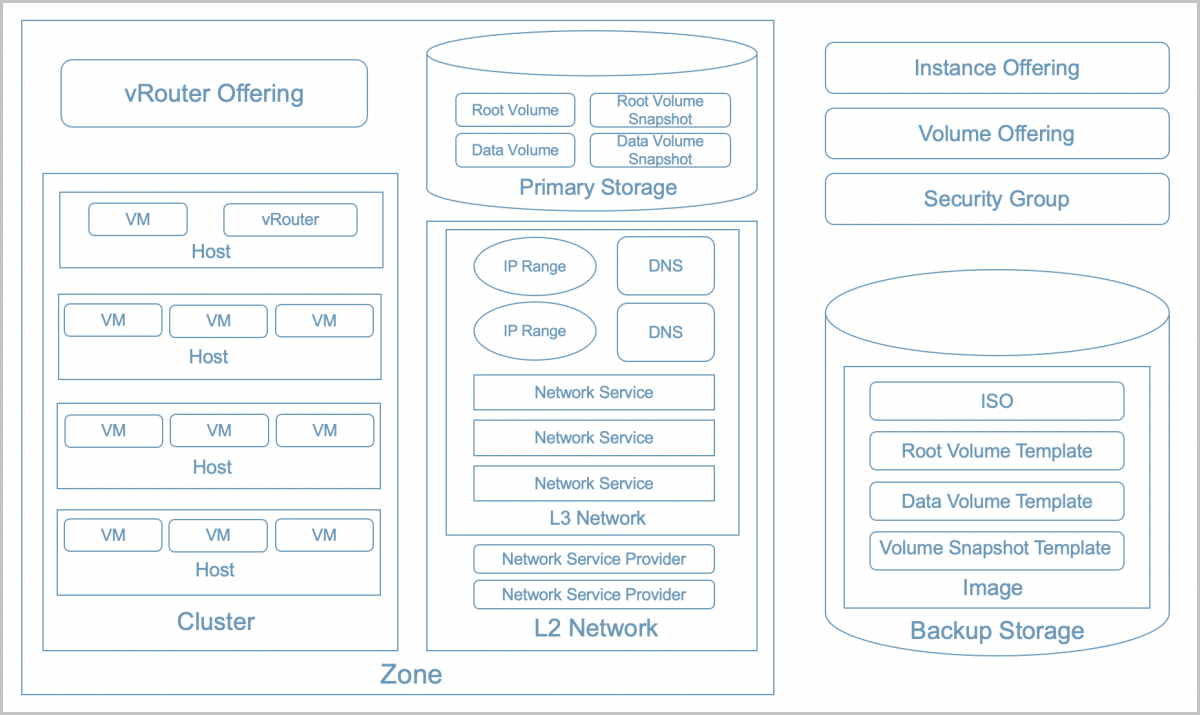云轴科技 ZStack Cloud
- Account Home
- Help & Support
- Training
ZStack Cloud is a next-generation product-level Private Cloud management platform that aims to manage various resources, such as compute, storage, and network resources in data centers by providing flexible and comprehensive APIs.
The functional architecture of ZStack Cloud is shown in Figure 1.

ZStack Cloud helps enterprises better manage their infrastructure resources, such as the compute, storage, and network resources, in their data centers. The bottom layer of ZStack Cloud supports both KVM and VMware virtualization technologies. In addition, ZStack Cloud supports various storage types, such as DAS, NAS, SAN, and DFS. To be more specific, local storage, NFS storage, SAN storage, and distributed block storage are supported. ZStack Cloud also supports various network models, such as VLAN and VXLAN.
ZStack Cloud communicates with the MariaDB database and other service modules by using a message bus, providing diversified features such as VM instance management, host management, storage management, network management, billing management, and real-time monitoring. In addition, ZStack Cloud provides Java SDKs and Python SDKs, and allows you to schedule and manage resources by using RESTful APIs. With ZStack Cloud, you can build a private cloud that is simple, strong, scalable, and smart.

 Note: Relationship between primary storages and backup storages:
Note: Relationship between primary storages and backup storages:The following properties are common to almost all resources in ZStack Cloud:
Resources in ZStack Cloud support full or partial Create, Read, Update, Delete (CRUD) operations.
Email Us
contact@zstack.ioEmail Us
contact@zstack.ioThe download link is sent to your email address.
If you don't see it, check your spam folder, subscription folder, or AD folder. After receiving the email, click the URL to download the documentation.Thank you for using ZStack products and services.
Submit successfully.
We'll connect soon.Thank you for choosing ZStack products and services.